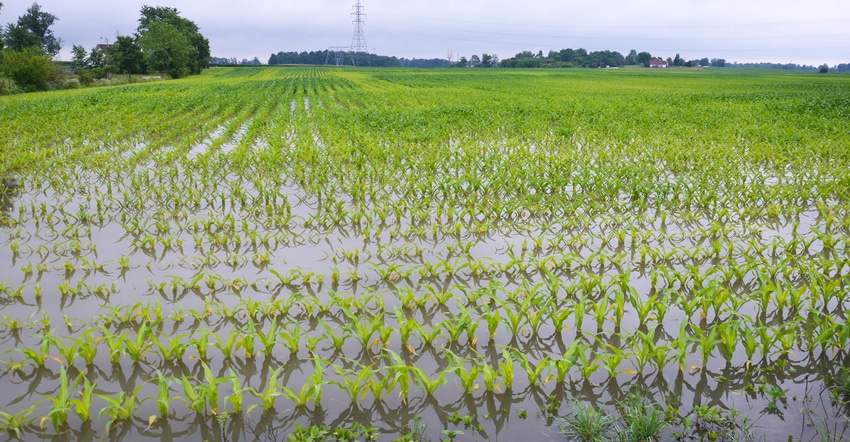March 11, 2019

By Tony Bailey
How well do your soils really function? Take some time to observe how water moves in your field during a rain event. Does each raindrop enter the surface of the soil, infiltrate and move freely through the soil profile? Or do raindrops splatter the soil surface, causing the upper layer to become waterlogged, and start to run off?
If it’s the latter, the biggest culprits may be surface crusting and subsurface compaction. Observed erosion or runoff problems in fields are likely caused by a lack of water infiltration and movement through the soil profile.
Most soils have inherently good water infiltration potential, but they have been damaged and no longer function as they should. Large equipment, tillage and short rotations of two or fewer crops have increased loss of topsoil and soil organic matter, leading to degraded soils and compaction. Increased tillage and loss of soil biology also has reduced soil aggregates, which relates to the crumbliness of soils, plus field operations often take place in wet field conditions.
Getting water beneath the surface of the soil is one challenge, but you also want the water that enters the soil to move down freely to the lower soil profile. Compaction restricts and slows water movement to the lower soil profile. Think of surface sealing and compaction as putting layers of concrete at the surface and at the plow layer. Try to get water and roots through that!
When compaction happens
Soil compaction occurs when soil particles are pressed together, reducing the pore space between them. Soil compaction occurs in response to pressure, defined as weight per unit area, exerted by field machinery as the main cause.
Compaction is most commonly found in the subsurface of soils, especially at the points where shanks and other steel implements have historically contacted the soil — hence the term “plow layer.” But compaction can also be found on the soil surface as crusting and as sidewall compaction during planting. The risk for compaction is greatest when soils are wet.
Why is soil compaction a problem? A major concern is that it restricts rooting, which in turn reduces water and nutrient uptake by plants. With fewer and smaller pores, the soil becomes waterlogged, which also decreases the soil temperature. Lower soil temperatures affect the biological activity of soil organisms and slows the decomposition rate of crop residue and soil organic matter.
Soil compaction also makes it harder to pull equipment, which means more horsepower is required to do field operations, especially tillage. And more horsepower requires larger equipment — causing more soil compaction. This creates a precarious, challenging cycle to stop.
You hear statements about the need to do tillage to dry out cold, wet soils in the spring. The next time you hear that, stop to think about how soil compaction from tillage is artificially perching the water higher in the soil profile and how much that contributes to a cold, wet soil.
Bailey is the state agronomist with the Natural Resources Conservation Service in Indiana. He writes on behalf of the Indiana Conservation Partnership.
You May Also Like




